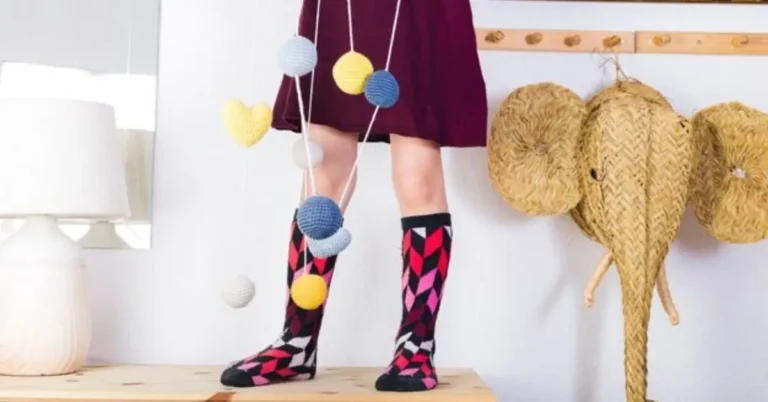Compression socks have become increasingly popular in recent years, particularly among athletes, travelers, and those with certain medical conditions. But what exactly are compression socks, and why should you consider incorporating them into your wardrobe? This extensive guide aims to provide a detailed exploration of compression socks, their benefits, applications, and the science behind how they work.
1. What Are Compression Socks?
Compression socks are specialized hosiery designed to improve circulation in the legs. They work by applying gentle, graduated pressure to the lower legs, which helps to reduce swelling, improve blood flow, and provide support. This compression is tighter at the ankle and gradually loosens towards the knee or thigh. The idea is to promote better venous return, which means aiding the blood in traveling back up to the heart from the lower extremities.
Materials and Construction
Compression socks are typically made from a blend of materials such as nylon, spandex, and sometimes cotton. The specific blend can vary based on the intended use of the socks. For example, athletic compression socks might be made with moisture-wicking materials to keep feet dry, while medical compression socks might use more durable materials for long-term wear.
The construction of compression socks involves a special weaving technique that ensures the gradient of pressure is maintained consistently throughout the sock. This precise construction is key to their effectiveness.
2. Types of Compression Socks
Compression socks come in various types and styles, each designed for specific purposes. Understanding the different types can help you choose the right pair for your needs.
Medical Compression Socks
Medical compression socks are prescribed by healthcare professionals and are used to manage chronic conditions such as chronic venous insufficiency (CVI), deep vein thrombosis (DVT), and varicose veins. These socks are categorized based on their compression levels, measured in millimeters of mercury (mmHg). The levels range from mild (8-15 mmHg) to moderate (15-30 mmHg) and high (30-40 mmHg or more).
Athletic Compression Socks
Athletic compression socks are designed to improve performance and recovery for athletes. They help increase blood flow to the muscles, reduce muscle vibration, and enhance overall endurance. These socks are often made with moisture-wicking and breathable materials to keep athletes comfortable during exercise.
Travel Compression Socks
Travel compression socks are aimed at reducing the risk of developing DVT during long flights or car journeys. They are generally less compressive than medical socks but still provide enough pressure to improve circulation and reduce swelling.
Fashion Compression Socks
Fashion compression socks combine the benefits of compression therapy with stylish designs. They are often used by individuals who want to benefit from compression therapy without compromising on aesthetics.
3. How Compression Socks Work
The principle behind compression socks is fairly straightforward but grounded in complex physiology. The socks apply graduated pressure that helps to:
Enhance Venous Return
By applying pressure to the legs, compression socks help to improve the efficiency of the venous system. This means that blood is more effectively pushed back towards the heart, reducing the risk of blood pooling in the veins.
Reduce Swelling
The pressure from compression socks helps to prevent fluid from accumulating in the tissues of the legs. This is particularly beneficial for individuals who experience swelling due to standing or sitting for long periods.
Decrease Muscle Vibration
In athletic contexts, compression socks help to stabilize the muscles and reduce the oscillation caused by impact and movement. This can lead to reduced muscle fatigue and soreness.
Prevent Blood Clots
In medical settings, compression socks are used to prevent the formation of blood clots in individuals who are at high risk, such as those undergoing surgery or those with a history of DVT.
4. Benefits of Compression Socks
The benefits of compression socks extend across various domains, including medical, athletic, and general wellness.
Medical Benefits
- Improved Circulation: Compression socks are often used to manage chronic venous conditions and promote better circulation.
- Reduced Symptoms of Varicose Veins: They can help alleviate the discomfort and appearance of varicose veins by improving blood flow.
- Prevention of DVT: For individuals at risk of blood clots, compression socks provide essential prophylactic benefits.
- Edema Reduction: They are effective in reducing swelling in the legs and ankles, particularly in patients with conditions that cause fluid retention.
Athletic Benefits
- Enhanced Performance: Athletes use compression socks to improve circulation, which can lead to better oxygen delivery to muscles and enhanced performance.
- Faster Recovery: Post-exercise, compression socks help in reducing muscle soreness and speed up recovery by facilitating better blood flow and reducing inflammation.
- Reduced Muscle Fatigue: The compression helps in stabilizing muscles and reducing fatigue during intense physical activities.
General Wellness Benefits
- Comfort During Travel: Long flights or road trips can lead to leg discomfort and swelling. Compression socks help mitigate these issues.
- Daily Comfort: For those who spend long hours on their feet or sitting, compression socks can provide added comfort and reduce leg fatigue.
5. Choosing the Right Compression Socks
Selecting the appropriate compression socks involves considering various factors, including compression level, size, and material.
Compression Level
The level of compression is crucial and should be chosen based on your specific needs. For general wellness and travel, lower compression levels (8-15 mmHg) are typically sufficient. For medical conditions, higher levels (15-30 mmHg or 30-40 mmHg) might be required.
Size and Fit
Proper sizing is essential to ensure that compression socks work effectively. Most brands provide sizing charts based on measurements of the calf circumference and the length of the leg. It is important to follow these charts carefully to avoid purchasing socks that are either too tight or too loose.
Material
The material of the socks affects both comfort and durability. For medical purposes, durability and ease of wear are paramount, while for athletic use, moisture-wicking and breathability are important. Choose a material that aligns with your primary use case.
Style and Design
Compression socks come in various styles, including knee-high, thigh-high, and full-length. The choice depends on personal preference and the intended use. For instance, knee-high socks are often sufficient for general circulation improvement, while thigh-high or full-length options may be preferred for more comprehensive coverage.
6. How to Wear and Care for Compression Socks
Wearing compression socks correctly is crucial to maximize their benefits. Here are some guidelines:
Wearing Compression Socks
- Put Them On in the Morning: It is best to put on compression socks in the morning before any swelling has occurred.
- Avoid Wrinkles: Ensure that the socks are smooth and free from wrinkles to prevent discomfort and ensure proper compression.
- Wear Them for the Recommended Duration: Follow the advice of your healthcare provider or the manufacturer regarding how long to wear the socks each day.
Caring for Compression Socks
- Regular Washing: Wash compression socks regularly to maintain hygiene. Follow the manufacturer’s instructions for washing, usually cold water and gentle detergent.
- Avoid Fabric Softeners: Fabric softeners can degrade the elasticity of the socks. It’s best to avoid them.
- Air Dry: Allow compression socks to air dry rather than using a dryer, which can affect their elasticity.
7. Potential Risks and Considerations
While compression socks offer many benefits, they are not suitable for everyone. There are some potential risks and considerations to keep in mind:
- Improper Fit: Socks that are too tight or too loose can cause discomfort or even exacerbate circulation issues. Proper fitting is crucial.
- Skin Conditions: Individuals with certain skin conditions or sensitivities should consult a healthcare provider before using compression socks.
- Underlying Health Conditions: Those with specific health conditions, such as severe peripheral artery disease, should seek medical advice before using compression socks.
8. Conclusion
Compression socks are a versatile and valuable tool for improving circulation, reducing swelling, and enhancing overall comfort and performance. Whether you are an athlete looking to boost your performance, a frequent traveler seeking comfort during long journeys, or someone managing a medical condition, compression socks can offer significant benefits.
By understanding the different types of compression socks, how they work, and how to choose the right pair, you can make an informed decision that best meets your needs. With proper use and care, compression socks can become an essential part of your health and wellness routine.
For those new to compression therapy or those looking to explore its benefits further, consulting with a healthcare professional can provide additional insights and guidance tailored to your individual requirements.

